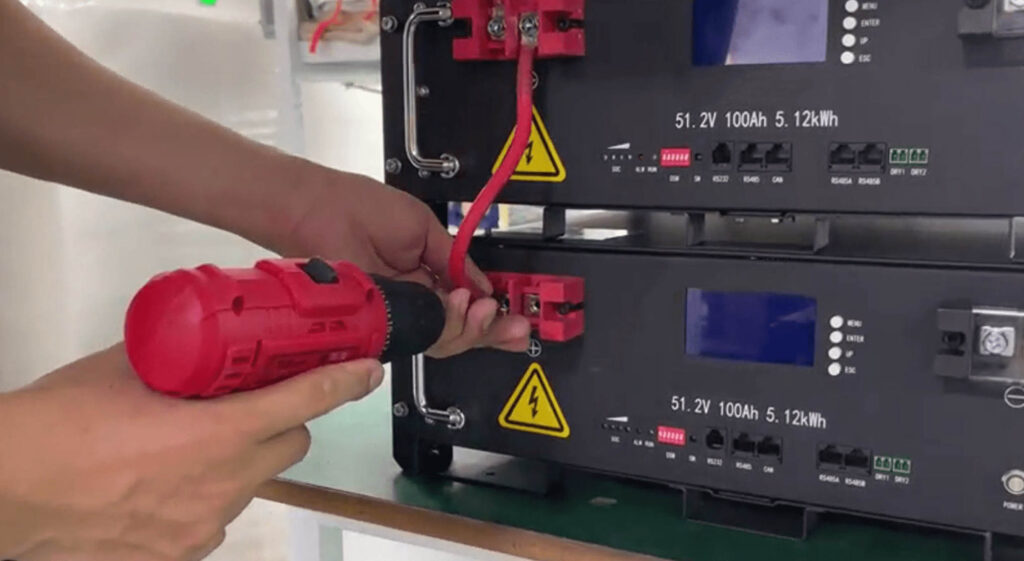Proper installation and maintenance of rack-mounted lithium batteries ensure optimal performance and safety. Here’s a guide to some common questions about the process.
1. What are the key considerations for installing rack-mounted lithium batteries?
- Environment: Choose a location with controlled temperature and humidity to prevent overheating and degradation of the battery’s performance.
- Rack Compatibility: Ensure the battery modules are compatible with your rack dimensions. Most systems fit standard 19-inch racks, but double-check specifications.
- Ventilation: Proper airflow around the racks helps maintain a stable operating temperature.
- Load Distribution: Distribute weight evenly across the rack to avoid instability, especially in systems with heavy battery modules.
2. How often should maintenance be performed?
- Regular Inspection: Check for physical damage, loose connections, and any signs of overheating on a monthly basis.
- Battery Management System (BMS) Monitoring: The BMS provides vital information on battery health. Regularly monitor and respond to alerts from the BMS, as it helps prevent issues like overcharging.
- Cleaning: Keep the battery and rack dust-free, as dust can affect cooling and potentially cause short circuits.
3. What safety precautions should be observed?
- Wear Protective Gear: Gloves, goggles, and anti-static clothing are recommended when handling the batteries.
- Proper Training: Ensure only trained personnel handle the installation and maintenance of the battery system to prevent mishandling and potential accidents.
- Fire Safety: Although lithium batteries are generally safe, it’s best to have a fire suppression system nearby in case of rare battery overheating incidents.


